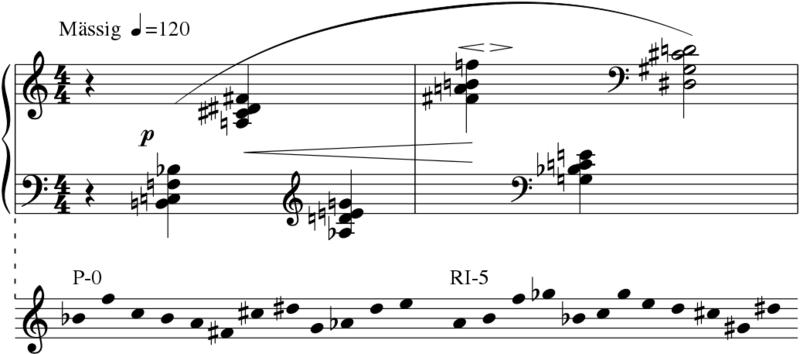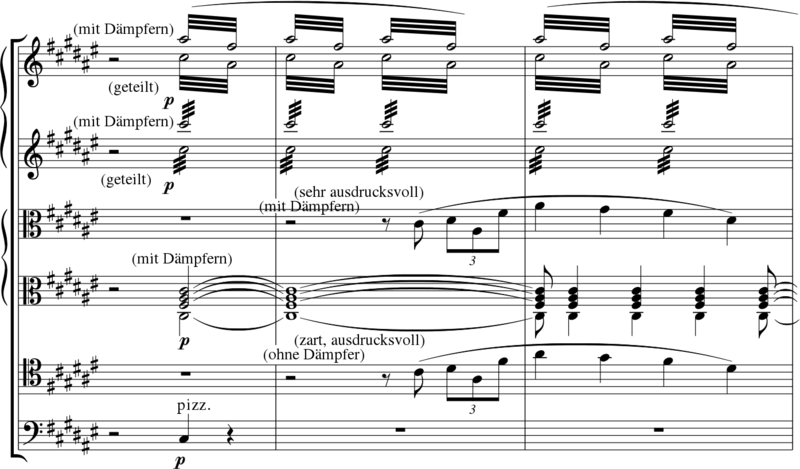SCORE parameter exercises
Here are some more short musical samples you must do as an exercise to become familiar with SCORE's parameters. These exercises focus on editing object parameters after the basic musical structure has been input into the SCORE editor in the user input mode.
Input and do edit adjustments on the following 10 examples. You should refer to the SCORE Reference Manual and the SCORE parameter table. Also, you can get brief explanations of each parameter for an item when editing it by pressing the F1 function key in the SCORE program. Brief visual summaries of the parameters are available online for the more complicated item types: notes (P1=1) and slurs (P1=5).
While doing each exercise, make a brief list of parameters you needed to alter in order to typeset each exercise that you do. Turn this list in with your completed exercises. For example to horizontally offset notes in exercise #1 below, you should alter P10 of the notes to offset them from the default time position. Another example would be which parameter for line codes needs to be changed to get a dashed line as seen in example #1 and what value indicates a dashed line rather than a solid line?
Here is a PDF file with the exercises already typeset: hardscore.pdf.
Contents
Example 1
Buxtehude exercise.
Hints:
- Note offsets for the multiple voices in this example are altered with P10 of code 1 items (notes).
- The dashed line is input in command mode as a dashed line.
Example 2
Cross-staff beaming.
Hints: This is a tricky example to accomplish even though it looks easy.
- Input all of the musical notes on the bottom staff.
- Use the S+ and S0 (S-zero) in input mode to move the notes temporarily to the upper staff and then back again to the original staff.
- Use the STUD command to align the stems (see manual).
- Put invisible rests in the top staff.
- The repeat brackets above the measures were entered with a blank middle, then some text was manually added to generate the 2X marking.
Example 3
[File:ChopinMazurka.svg|800px|center]
Hints:
- The small notes are cue-sized notes which can be entered in user input mode with the commands Q+ and Q-.
- The duration of the small notes are quintuplet sixteenth notes, which occur 20 times in a whole note.
- The duration of graces notes is indicated in the rhythm stage with a "G".
Example 4
Liber usualis. There are several was to typeset this example in SCORE. A simple method would be to change the notehead shape to the visual display below for each neume. The JT command can be used to space the text correctly after notes and text have been entered.
Hints:
- Add a blank 4-line staff, then position the text next, then position the neumes last.
- Neumes can be entered either as code 9 items (symbols) or as code 1 items (notes) with special shapes for the note heads and no stems.
- The barline in the middle of the staff has non-default start and stop points.
Example 5
Edvard Grieg
Hint:
- In user input mode "S+" is used to position notes one staff above the current staff; "S0" moves notes back to the current staff.
- The staccatos have to be moved manually above the beams. It is possible to do this visually rather than guessing at the vertical accent offset values.
Example 6
Liszt Consolation.
Example 7
Another one of Pachelbel's other works.
[File:Pachelbel.svg|800px|center]
Hints:
- Check the usage of P8 for beams to create the tricky beam break in the third measure.
Example 8
Campion tablature.
Hints:
- Similar to example 9
Example 9
Hints:
- The top two lines should be justified independently from the bottom line.
- P7 on the last note of the P-0 tone row on the bottom staff should be given a duration of 2 rather than 1 so that there is an extra spacing gap before the next tone row.
Example 10
Richard Strauss.
Hints:
- The 32nd note markings are for tremolos which are indicated as beam items.







